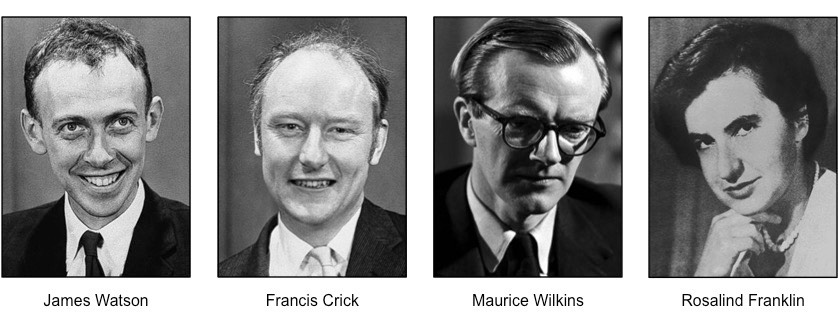Griffith’s Experiment
In 1928, Frederick Griffith conducted one of the first experiments to show that cells possessed genetic material
Griffith's experiment involved the use of two strains of pneumococcus – a deadly virulent strain (S) or a non-virulent strain (R)
- When Griffith infected mice with the non-virulent bacteria (strain R), the mice survived
- When Griffith infected mice with the virulent bacteria (strain S), the mice died
- When Griffith infected mice with heat-killed virulent bacteria (strain R), the mice survived as the bacteria had been killed
- When Griffith infected mice with a mix of heat-killed strain S and living strain R, the mice were found to have died
From this Griffith’s concluded that the living R cells had somehow been transformed into virulent S cells
- This indicated that there was some form of transferrable genetic material present within the cells (i.e. DNA)
Griffith’s Experiment – Demonstrating Bacterial Transformation

Avery-MacLeod-McCarty Experiment
Oswald Avery and colleagues expanded upon the findings of Frederick Griffith to demonstrate that DNA is the genetic material
- They prepared cultures containing the heat-killed S strain and then removed lipids and carbohydrates from the solution
- Next they treated the solutions with different digestive enzymes (DNase, RNase or protease) to destroy the targeted compound
- Finally, they introduced living R strain cells to the culture to see which cultures would develop transformed S strain bacteria
Only in the culture treated with DNase did the S strain bacteria fail to grow (i.e. no DNA = no transformation)
- This indicated that DNA was the genetic component that was being transferred between cells
Despite this finding, the scientific community was reluctant to accept the role of DNA as a genetic material
- It was only 8 years later, when Hershey and Chase conducted their experiment, that the concept gained traction
Avery-MacLeod-McCarty Experiment – DNA as the Genetic Material of the Cell

DNA Structure Elucidation
Four scientists are generally recognised as having contributed to the elucidation of DNA structure
- Rosalind Franklin and Maurice Wilkins used X-ray diffraction techniques to identify key properties of the DNA molecule
- Wilkins shared this data (without Franklin’s permission) with two other scientists, James Watson and Francis Crick
- Watson and Crick used this data to help construct an accurate model of DNA structure (as a double helix)
- In 1962, Watson, Crick and Wilkins were awarded the Nobel prize (Franklin’s critical efforts were not recognised)
Pioneers of DNA Structure

